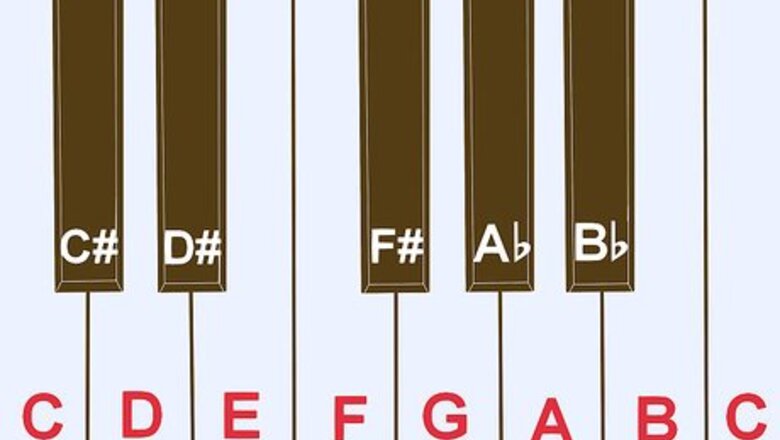
views
Learning the Piano

Learn about the keyboard. Before you can learn to play the organ, you must have some experience on the piano. In fact, many organ teachers will not accept you without at least one year of piano training. Begin your journey by learning about the keyboard on the piano. You must first understand what the various keys do, and which notes they can produce. The keyboard of a piano repeats its notes from top to bottom across several octaves. This means that the notes change from low (left side) to high (right side), but don't vary in pitch. There are twelve notes a piano can produce: seven white key notes (C, D, E, F, G, A, B) and five black key notes (C-sharp, D-sharp, F-sharp, A-flat, and B-flat).

Play scales. Playing scales (a series of notes) is the cornerstone of mastering piano technique. Learn some basic piano scales, starting with simple two-finger scales and then advancing to three-finger scales. Practice your piano scales every day.

Learn to read music. As organ is considered an advanced instrument, most teachers will expect you to be able to read sheet music before you begin organ study. Learning to read music can be challenging at first, but it is a crucial skill for mastering any musical instrument, including piano and organ. Learn about the treble clef. Move on to the bass clef. Learn about the parts of the note (the note head, the stem, the flag). Learn about meter and rhythm.
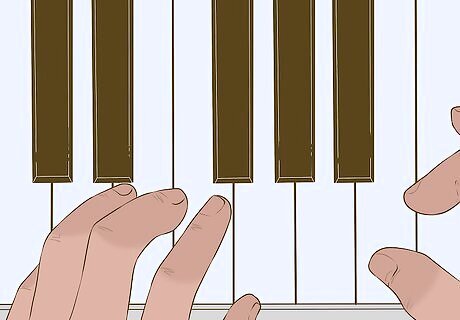
Practice using your hands independently. Once you have become comfortable with piano scales, and perhaps started playing some simple compositions, you must learn to use each of your hands independently. Eventually, you must be able to play two different movements (one with each hand) at the same time. This simultaneous playing must be mastered before you can advance to organ play.
Gathering Everything You Will Need

Find an organ teacher. Inquire at local churches, colleges, or music shops. Many colleges have undergraduate programs in applied organ, and music theory in general. You can also check organ-related periodicals for teachers. But the best way is to contact your local chapter of The American Guild of Organists, and search for a teacher through them. If you choose to talk to a local Church Organist, make sure that they are well-qualified to teach. When you make contact with a teacher, be sure to find out if you meet their minimum requirements to begin lessons (for example, ability to sight read and/or a certain level of experience on the piano).

Gain access to an organ. In order to learn the organ, you will need to practice outside of your lessons. An organ is a large and expensive instrument, so before you can begin serious organ study, you must ensure that you have access to a practice instrument. Speak to your instructor about the possibility of practicing at the studio, inquire at local churches, or obtain a small (or digital) organ for home.

Purchase an introductory level organ book. An introduction to organ book will help you to study the basics alongside what you learn during your lessons. Most music stores will carry such a book. Speak to your organ instructor about a book they recommends to work well alongside their teaching.

Buy a pair of organ shoes. Pedals are a unique aspect of organ playing, and having the proper footwear will help you develop efficient technique. Additionally, since you will only be wearing your organ shoes when sitting at the organ, they will not pick up dirt or grime which can damage the pedals. You can purchase them online for around sixty dollars. Some instructors may require you to have proper organ shoes before you can play on their organ.
Studying the Organ
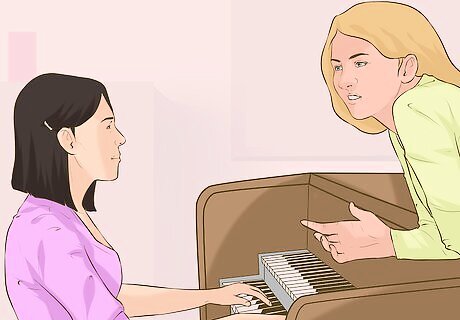
Begin taking lessons. The organ is a difficult instrument. As such, you will benefit greatly from professional instruction. Once you have located a teacher in your area, create a regular schedule of lessons (such as, twice a week). Find out if there is anything you must bring with you to each lesson. Organize your other life obligations so that they do not conflict with your lesson times.
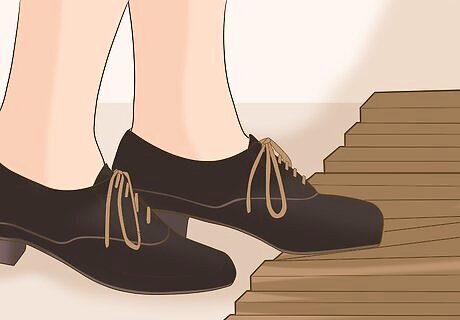
Study pedal technique. The primary difference between piano and organ is the introduction of a third voice, by way of the foot pedals. To play organ, you must practice proper pedal form and technique. Work to keep your heels together at all times. Additionally, your knees should also be touching. Finally, play on the inside of your foot, which means turning your ankle in.

Practice legato playing. With the organ, you do not want there to be any space between notes. You likewise do not want to the notes to overlap. This is known as “legato playing.” Legato playing also involves a technique called “trapping the note.” This means holding a key down with one finger so that you can advance to another key (note) with a different finger. For example, if you initially press a key down with your first finger, you may need to use your thumb to keep that key down, so that your first finger can advance to another key. Work your way across the keyboard and back to master this technique and achieve a legato effect. Begin practicing legato playing using only the white keys. Once you feel comfortable with this, work to incorporate the black keys. When you feel comfortable playing legato with your hands, advance to practicing your legato playing with both hands and feet.

Practice! There is only one way to master any instrument: practice, practice, practice. Create a daily practice schedule for yourself and stick with it. The more practice you can put in, the more you will get out of it.

















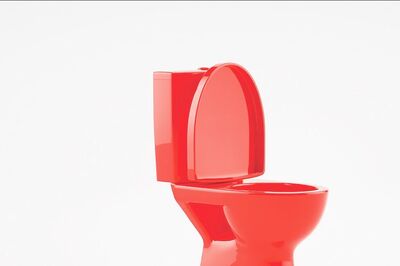


Comments
0 comment